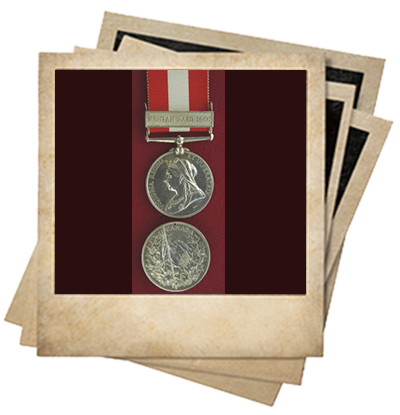Captain Joseph Kyle
 (June 24, 1830 – May 17, 1903, died at age 73 in Paisley, Ontario)
(June 24, 1830 – May 17, 1903, died at age 73 in Paisley, Ontario)
BIOGRAPHY:
Joseph Kyle was born to Andrew Kyle and Martha McFarland on June 24, 1830 in Norval, Ontario. He was the 7th of 8 children.
His siblings include:
- Ebenezer Kyle, a carpenter, born 1822, died Aug 6 1859, children are Henrietta Martha, Andrew, Susannah and James.
- James Kyle, a blacksmith, born 1822, died 1874, children are Andrew, Susan and Ebenezer.
- Margaret Kyle (Dougall), had 6 children but the only one we found records on is Mary.
- Mary Ann Kyle (Cunningham), married to Alexander Cunningham, died Dec 2 1897.
- Jane Kyle (Scott), married to Robert Scott, only child is Lovey Louise born May 23 1867.
- Elizabeth Kyle (Johnson), married to Hugh Johnson, only child is Mary Lee.
- Martha Kyle (Johnson?), born 1835 and died in childbirth in 1853 at age 18.
From Dec 1 1862 to Mar 2 1864, he was postmaster for Norval, Ontario, as well as the owner of the Emporium General Store.
Captain Joseph Kyle served in the Fenian Raids from June 5 – July 15, 1866 and reported to Col. Denison.
Fenian Raid 1866 Medal
1866 Fenian Raid Medal
He had 2 marriages, the first to Margaret and the second to Mary Elizabeth Aikin. His second marriage resulted in his only child, Norval Webster Kyle, born Nov 30, 1895 and died Feb 7, 1953.
THE FENIAN RAIDS:
When many British troops in Canada were withdrawn in the mid-1850s, to serve in the Crimea or India, there was a need to reinforce the ability of the militas of the two Canadas to defend themselves. So Volunteer Companies were authorized, in addition to the sedentary militia. Between 1856 and 1863, Volunteer Companies of Infantry or Rifles were organized in Brampton, Georgetown and Oakville (where the Lorne Scots currently have armouries), in Orangeville and a dozen other towns in the three counties now served by the regiment.
Despite the threat, these were still times of fiscal restraint: soldiers were not adequately unifomed, armed and drilled, and musters were often abandoned. The need for a strong militia intensified in the early sixties, during the tense times when it appeared that Canada might be drawn into the conflict between the Union and Confederate States. The unstable condition in the United States at the end of the Civil War put the militia to the test.
From Peel, the Derry West and Grahamsville Volunteer Infantry Companies had been called to arms in March of 1866, in anticipation of a Fenian raid expected on St Patrick’s Day. When the attack failed to materialize, they were dismissed within a few weeks. Finally the Fenians crossed the border, on June 1st. Again the volunteers entrained for the frontier, to protect the Welland canal and the suspension bridge at Niagara Falls. One Peel veteran recalled that the greatest hardship during the 46 days of active duty was on the occasion when sixty men were quartered in a little hotel with only three beds.
The experience of mobilization had pointed to a serious weakness. The individual companies, from Peel, and from Stewarttown, Norval and Oakville in Halton, were quick to respond, to move to the front and to do creditable service. But they were only companies, and much of the battalion structure had to be created on the spot, commanded by officers newly-appointed to battalion positions, who were to learn their job in what could very well have been battle conditions.
So to provide a structure where these larger roles could be learned and practiced, new county battalions were authorized. Amongst the first, in September of 1866, were the 36th Peel Battalion and the 20th Halton Battalion. Marksmanship has always been important in the regiment, and the Halton battalion quickly resolved to become a Rifle rather than an Infantry Battalion–the change was authorized in 1872. Silver shooting trophies from the last century still adorn the mess, and the unit sent many successful competitors to the Bisley matches